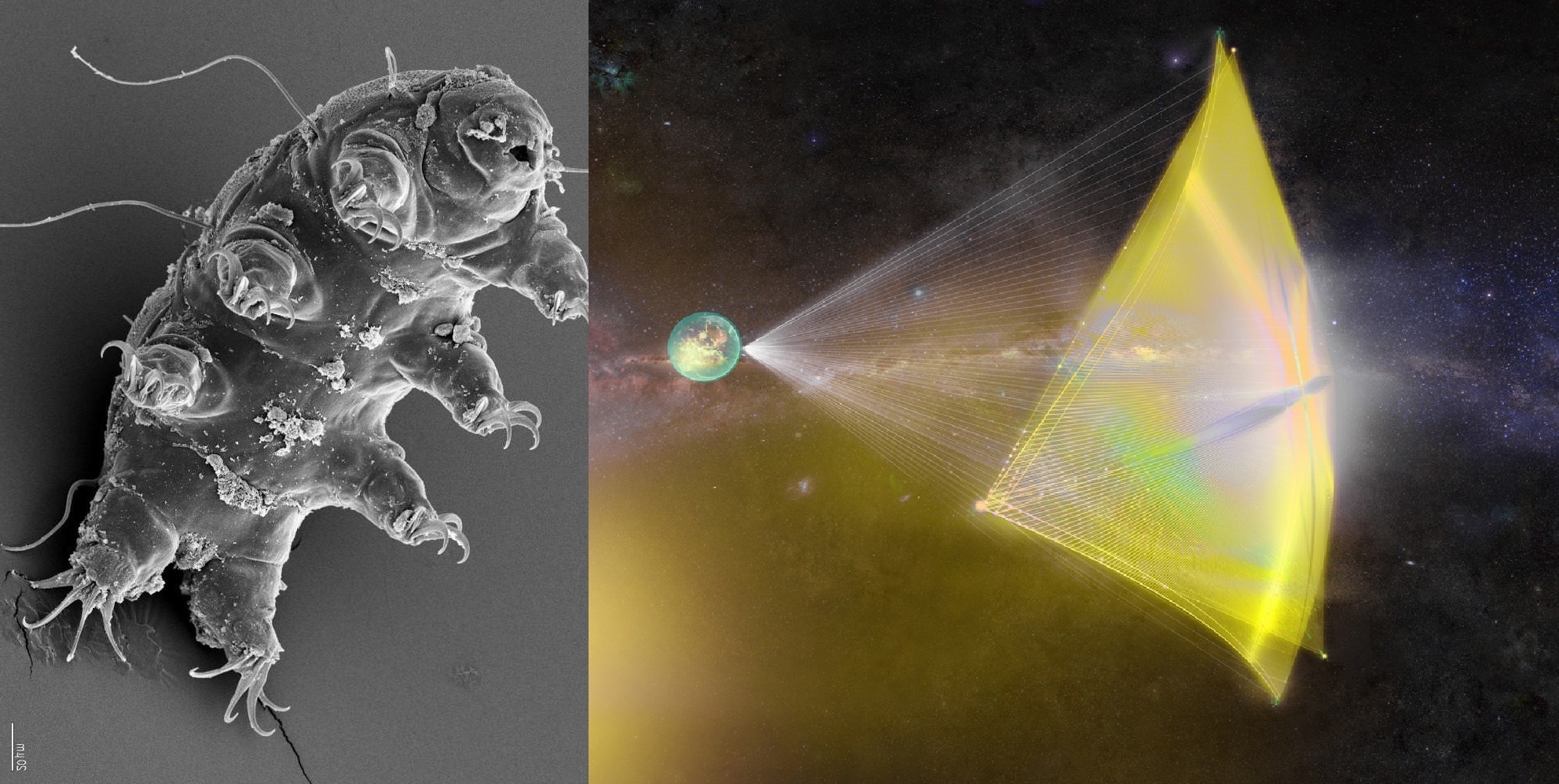The Breakthrough Starshot program aims to cross the immense distances to the nearest star in just decades. Using a high-powered laser to propel a reflective sail technology to relativistic speeds is their mission. The selection of sail material is key to its success as it must be lightweight while being able to withstand acceleration and radiation from the laser. A recent study explores various materials and proposes that core-shell structures—spherical particles composed of two different materials—could be a promising solution.
Continue reading “What Should Light Sails Be Made Out Of?”Will Water Bears be the First Interstellar Astronauts?
In just a few years, astronauts will walk on the surface of the Moon for the first time since the Apollo Era. In addition to the Artemis Program, NASA’s fabled return to the Moon, there are also a number of planned missions involving the European Space Agency (ESA), JAXA, China, and Russia. By the 2030s, NASA and China hope to send crewed missions to Mars, which will culminate in the creation of a permanent base on the surface.
When it comes to interstellar missions, however, there are no plans for crewed missions on the table. While there are proposals for sending robotic missions, sending astronauts to nearby stars and exoplanets simply isn’t feasible yet. However, according to new research led by the University of California, interstellar missions could be conducted in the near future that would have tardigrades (aka. “Water Bears”) as their crew.
Continue reading “Will Water Bears be the First Interstellar Astronauts?”

